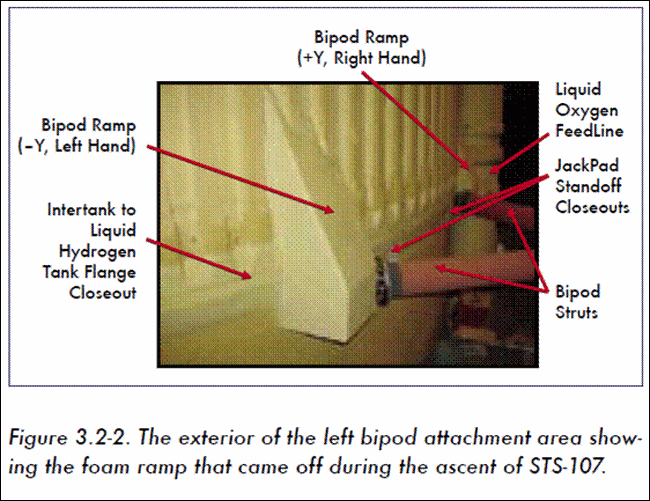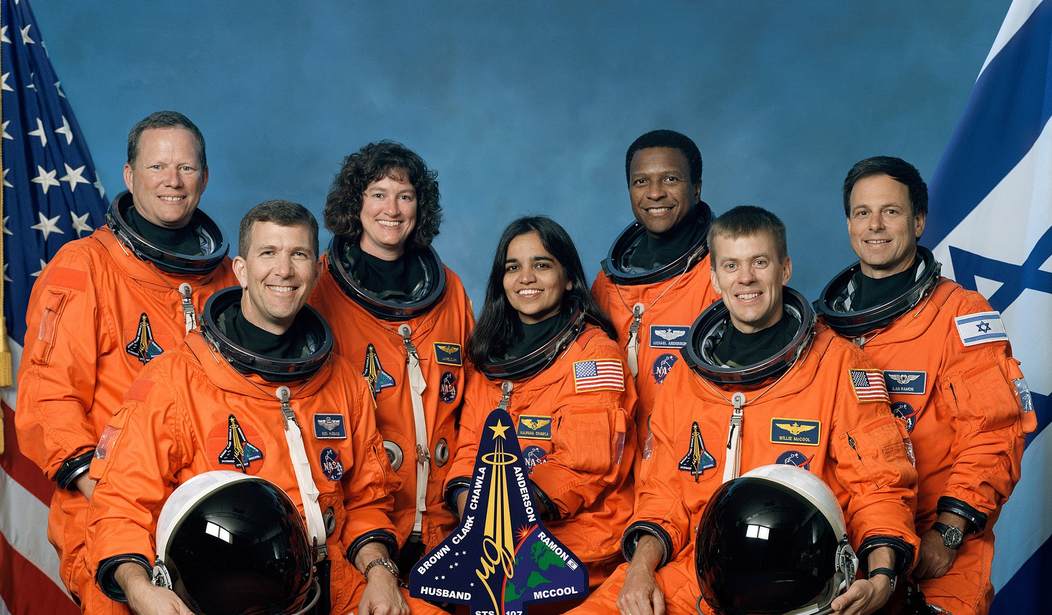It seems strange to think that the idea of launching human beings into outer space would ever seem routine, but by 2003 that’s where we were as a nation with the Space Shuttle program. After 22 years and 107 missions, the program didn’t often make headlines until Feb. 1, 2003, when the first shuttle, Columbia, disintegrated on re-entry, killing all seven crew members on board.
The mission, known as STS-107, seemed to go off without any hitches. The crew and the equipment on Columbia conducted dozens of experiments over nearly 16 days in orbit, including the possible discovery of an atmospheric phenomenon. STS-107 also featured the first Israeli astronaut, Ilan Ramon, aboard.
However, as Columbia launched, a piece of foam broke off and hit the shuttle’s left wing, damaging the wing’s thermal protection system.

In the GIF below, you can see Columbia strike the foam as it falls off.

Neither the crew nor mission control knew that the foam strike had happened at the time. It wasn’t until the mission’s second day that anyone at NASA realized what had happened, but NASA, the United Space Alliance, and Boeing began investigating. NASA’s Intercenter Photo Working Group, which had been examining videos and photos from the launch, was concerned about potential damage, while program managers weren’t as worried.
Boeing’s team concluded from modeling that the damage to the wing would mean that Columbia’s skin would be unprotected from the heat in that area, but NASA’s Debris Assessment Team dismissed those concerns. That team has compared the foam strike to similar strikes on other shuttle missions where the shuttle survived re-entry.
Recommended: NASA’s DART Mission Makes Impact
As the mission went on, members of the Mission Management Team were even less worried about the foam’s impact than even the Debris Assessment Team. However, Flight Director Steve Stich sent an email to Commander Rick Husband and Pilot William McCool aboard the Columbia a week into the mission, telling them what happened.
“The impact appears to be totally on the lower surface and no particles are seen to traverse over the upper surface of the wing,” Stich wrote. “Experts have reviewed the high speed photography and there is no concern for RCC or tile damage. We have seen this same phenomenon on several other flights and there is absolutely no concern for entry.”
Mission control also showed the crew footage of the debris strike so that they could address it in post-mission press conferences. The mission went on as planned.
On Feb. 1, re-entry day, Columbia begin its re-entry process as normal. As the shuttle crossed over California, Arizona, New Mexico, Utah, and Texas, observers could see debris flying off the craft. The crew began to realize something was wrong when alarms went off, denoting problems with Columbia‘s left-side landing gear. The shuttle began to lose its orientation, and the crew fired thrusters to correct the problem.
At 8:59:32 a.m., mission control lost radio contact with Columbia, and the shuttle stopped sending information to NASA. Columbia pitched violently upward and began to spin. The crew switched to manual control, showing that they were conscious, and suddenly the shuttle broke up.
Estimates are that all of the debris had hit the ground by 9:35. After a seven-month investigation, some 85,000 pieces of debris had been recovered, consisting of roughly 38% of the shuttle. NASA recovered around 35% of the experiment data as well.
Columbia was the first time NASA lost astronauts on re-entry. The American space program’s other disasters had occurred within days of Feb. 1 — the Apollo 1 fire on Jan. 27, 1967, and the Space Shuttle Challenger explosion on Jan. 28, 1986.
If you go outside tonight and look up at the stars, think of Husband, McCool, Ramon, David Brown, Laurel Clark, Michael Anderson, and Kalpana Chawla, and remember how they lost their lives 20 years ago today.










Join the conversation as a VIP Member